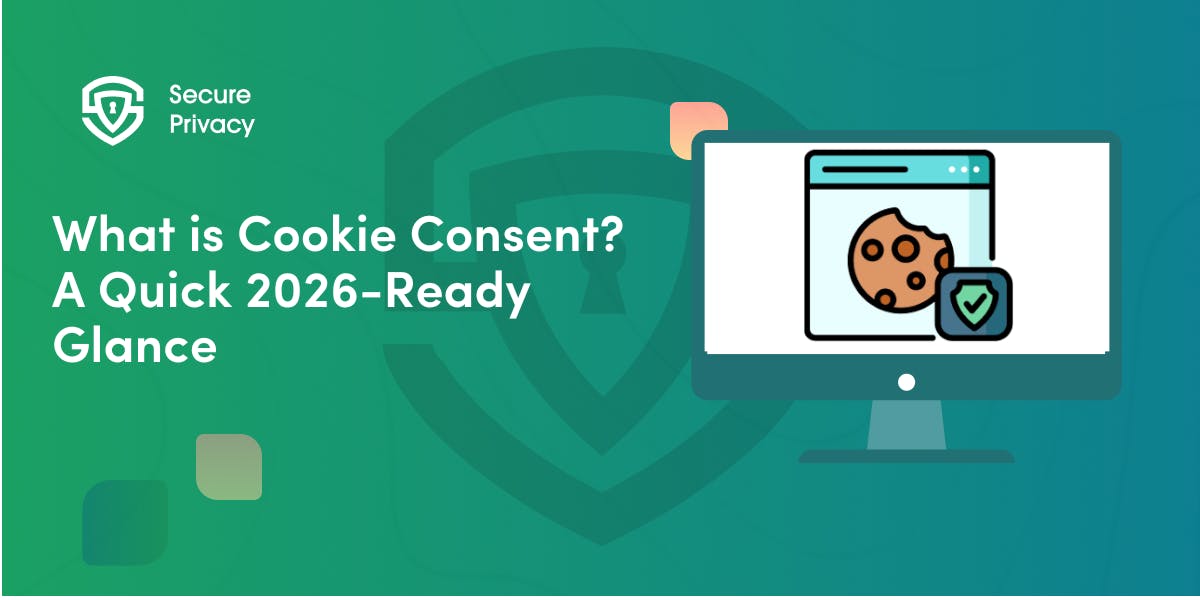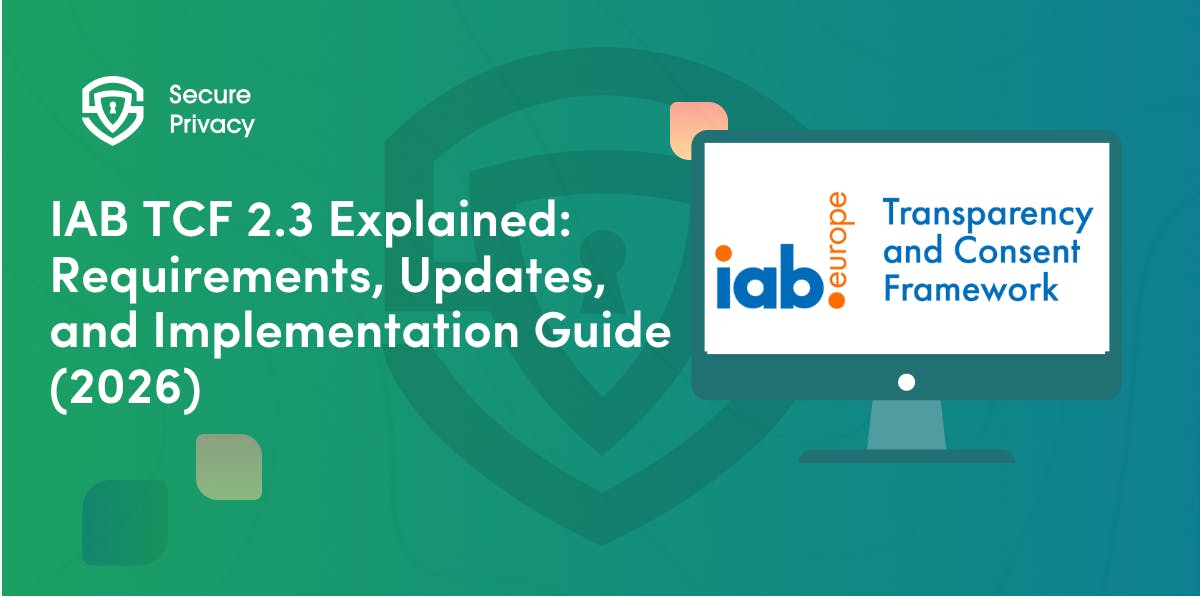Dark Pattern Bounties: Crowdsourcing Compliance in Consent UI Design
The rise of dark pattern bounties—crowdsourced programs that reward users for reporting manipulative consent interfaces—has emerged as a game-changer in data privacy compliance. By 2025, platforms like EthicalUI.org and regulatory-backed initiatives have forced major corporations like Meta and Amazon to overhaul their consent workflows, proving that user-driven accountability can reshape corporate behavior.
The rise of dark pattern bounties—crowdsourced programs that reward users for reporting manipulative consent interfaces—has emerged as a game-changer in data privacy compliance. By 2025, platforms like EthicalUI.org and regulatory-backed initiatives have forced major corporations like Meta and Amazon to overhaul their consent workflows, proving that user-driven accountability can reshape corporate behavior.
Is your organization's consent interface truly ethical, or could it be vulnerable to user-reported violations? As these bounty programs gain momentum, companies face both risks and opportunities in how they design user experiences around privacy choices.
The Dark Pattern Crisis in 2025
Despite years of regulatory action and growing consumer awareness, manipulative design practices remain pervasive in digital interfaces. The European Commission reported in 2024 that a staggering 97% of EU apps still deploy dark patterns despite GDPR fines, highlighting the persistence of these practices even in heavily regulated markets.
The financial stakes have escalated dramatically, with the average FTC penalty for dark pattern violations reaching $14.8 million in 2024 settlements. These substantial penalties reflect regulators' increasing willingness to treat manipulative interfaces as serious violations deserving significant consequences.
Beyond regulatory penalties, dark patterns create business risks through diminished consumer trust. According to PrivacyTrust's 2025 research, 83% of users abandon brands using manipulative consent interfaces. This dramatic impact on customer retention demonstrates that ethical design has become a business imperative rather than merely a compliance concern.
Common Consent Interface Violations
Dark patterns exploit cognitive biases to trick users into unintended actions. In consent interfaces, several manipulative techniques have become particularly common:
"Accept All" asymmetry represents perhaps the most widespread violation, where decline buttons are hidden or minimized compared to acceptance options. This often manifests as grayed-out text for rejection versus vibrant, colorful "Accept" calls-to-action, creating visual hierarchy that guides users toward sharing more data than they might otherwise choose.
Emotional blackmail has emerged as another concerning trend, using guilt-inducing language like "No, I don't care about protecting my privacy" for opt-out options. These manipulative phrasings have been specifically banned under CPRA 2025 amendments but continue to appear in many interfaces.
Infinite scroll consent walls force users to navigate endlessly to reject non-essential cookies, creating friction that discourages privacy-protective choices. This technique exploits user fatigue, knowing that many will simply accept all tracking rather than complete a deliberately cumbersome process.
These techniques share a common goal: steering users toward privacy-compromising choices through interface manipulation rather than genuine informed consent.
How Dark Pattern Bounties Work
Dark pattern bounty programs have created a powerful new accountability mechanism by enabling users to directly report manipulative practices. These programs follow a structured process designed to separate valid complaints from unsubstantiated reports:
The Reporting Process
The journey begins with user submission, where individuals report suspicious UIs via platforms like EthicalUI.org. These submissions typically include screenshots, descriptions, and step-by-step reproduction instructions that document the potential violation.
Next, AI triage systems filter low-quality reports using guidelines established by organizations like the EU Dark Pattern Taskforce. This automated screening reduces the burden on human reviewers while ensuring that substantive complaints receive proper attention.
Valid submissions then undergo expert validation, where privacy lawyers and UX designers assess them against standards like GDPR and CPRA. This professional review ensures that only genuine violations—not merely unpopular design choices—result in action.
Confirmed violations trigger bounty payouts ranging from $50 to $5,000, with funding provided by regulatory agencies or ethical advertising networks. These financial incentives have proven essential for sustaining user participation and creating meaningful accountability.
Finally, companies receive 72-hour cure notices before public disclosure or regulatory referral, providing an opportunity to address issues promptly before facing reputational damage or financial penalties.
Case Study: Meta's Cookie Banner Redesign
Meta's experience demonstrates how bounty programs can drive meaningful change even at the largest technology companies. After receiving over 1,200 bounty reports flagging its "Ghost Decline" button—an opt-out process requiring four clicks compared to a single click for acceptance—Meta implemented comprehensive changes to its consent interface.
The company simplified consent revocation to achieve one-click parity between acceptance and rejection, ensuring that privacy-protective choices required no more effort than data sharing. Meta also adopted a monochromatic UI with consistent styling for all options, eliminating the psychological nudging created by color-based emphasis.
Perhaps most surprisingly, Meta saw a 40% increase in opt-in rates following these changes, according to LinkedIn's 2025 report. This counterintuitive result demonstrates an important principle: when users feel their choices are respected rather than manipulated, they often develop greater trust and willingness to share data for purposes they genuinely value.
Regulatory Impact
Dark pattern bounty programs initially emerged from grassroots privacy advocacy, but their effectiveness has prompted significant regulatory adoption and support.
Embedding Bounties in Regulatory Frameworks
The EU's Crowdsourced Compliance Act of 2025 represents perhaps the most significant institutional endorsement of the bounty model. This legislation mandates that 30% of Data Protection Authority fines must fund public bounty pools, creating sustainable financial support for ongoing user-driven enforcement.
In the United States, the FTC has introduced its "Clean UI" Certification program, awarding trust badges to companies that avoid bounty reports for 12 consecutive months. This positive incentive approach has proven remarkably effective, with certified companies reporting a 27% conversion lift—demonstrating the tangible business value of ethical design practices.
California's SB 1234 takes a different approach by directly rewarding whistleblowers with 15-30% of penalty amounts. This legislation creates powerful financial incentives for identifying violations, as demonstrated when bounty submitters received $2.25 million from Blackbaud's $6.75 million fine. This substantial reward attracted significant attention from both professional UI experts and everyday users, dramatically increasing scrutiny of consent interfaces.
Together, these regulatory innovations have transformed dark pattern bounties from an experimental concept to a fundamental component of the privacy enforcement landscape, creating accountability mechanisms that extend far beyond what traditional regulatory approaches could achieve alone.
Challenges & Solutions
Despite their effectiveness, dark pattern bounty systems face several significant challenges that have prompted innovative solutions.
Addressing Implementation Obstacles
False reports represent a major challenge, with approximately 45% of submissions failing to identify genuine violations. This high volume of invalid reports threatens to overwhelm validation systems and undermine program credibility. Leading platforms have addressed this issue through AI sentiment analysis combined with blockchain reputation scoring, creating accountability for submitters while maintaining program efficiency.
Corporate retaliation against whistleblowers emerged as another serious concern, particularly when employees reported violations within their own organizations. Anonymous submission via Zero-Knowledge Proof IDs has largely solved this problem, allowing individuals to claim bounties without revealing their identities while still providing cryptographic verification of their submissions.
Global consistency in dark pattern definitions has proven challenging as different jurisdictions apply varying standards. The W3C's Dark Pattern Taxonomy, established as a 2025 standard, has significantly improved this situation by creating internationally recognized definitions and evaluation criteria. This standardization helps both submitters and reviewers apply consistent principles across geographic boundaries.
These technical and procedural innovations have strengthened the bounty ecosystem while addressing legitimate concerns about its implementation, creating more resilient systems capable of withstanding both innocent misuse and deliberate manipulation.
Future Trends
The landscape of dark pattern bounties continues to evolve rapidly, with several emerging trends that will shape its future development.
Innovations on the Horizon
An AI arms race is developing between manipulation and detection technologies. On the offensive side, models like GPT-5 can generate increasingly sophisticated "stealth dark patterns" designed to evade detection through subtle psychological manipulation. Defensively, tools like DarkScan use advanced computer vision to automatically flag potential violations, creating an ongoing technological competition between deception and detection.
Bounty DAOs (Decentralized Autonomous Organizations) represent another significant innovation, using blockchain governance to vote on report validity. Platforms like PrivacyPool distribute both evaluation responsibilities and rewards across their membership, creating community-driven enforcement that resists centralized influence or manipulation.
Gamified compliance systems are making participation more engaging by awarding NFT badges for successful reports. These digital credentials, often redeemable for discounts or services, create additional motivations beyond monetary rewards and help build communities of privacy advocates committed to ongoing enforcement.
These innovations suggest that dark pattern bounties will continue to evolve beyond their current implementations, potentially becoming even more effective as technologies and governance models mature.
Actionable Insights for Your Organization
Whether you're concerned about potential violations or seeking to demonstrate ethical leadership, several practical approaches can help navigate the bounty landscape effectively.
Implementing Ethical Design Practices
Adopting interface symmetry represents the most fundamental best practice. Make opt-out paths equal in clicks, color, and prominence to opt-ins, ensuring that user choices reflect genuine preferences rather than interface manipulation. This approach not only reduces violation risks but often improves user trust and engagement.
Consider leveraging bounty programs proactively by submitting internal UIs to platforms like EthicalUI.org before launch. Many platforms offer free pre-launch audits that identify potential issues before they trigger reports or penalties, transforming these programs from threats into valuable design resources.
Organizations should also explore opportunities to monetize their ethical approach. With 38% of consumers willing to pay premium prices for "bounty-certified" services, transparent compliance can become a revenue driver rather than merely a cost center. Leading companies now prominently feature their ethical certification in marketing materials, differentiating themselves in privacy-conscious markets.
By implementing these practices, your organization can not only avoid penalties but potentially gain competitive advantage through demonstrated commitment to ethical design principles.
The Power Shift in Digital Privacy
Dark pattern bounties have fundamentally altered the power dynamics in digital privacy, shifting influence from corporations to users through crowdsourced accountability. This transformation is reflected in adoption rates, with 62% of Fortune 500 companies now incorporating some form of crowdsourced compliance into their design and review processes.
The impact has been particularly dramatic in high-sensitivity sectors, with manipulative UIs declining by 73% in fintech and healthcare since 2023. This improvement demonstrates that bounty programs have succeeded where traditional regulation often struggled, creating effective deterrents to dark patterns even among powerful industry players.
While challenges remain in standardization and enforcement, the dark pattern bounty model has proven remarkably effective at identifying and eliminating manipulative practices. By combining regulatory support with user empowerment, these programs have created a more balanced digital ecosystem where genuine consent—not manipulation—guides user choices about their personal data.
As these systems continue to mature, organizations face a clear choice: proactively embrace ethical design principles or risk financial penalties and customer defection in an increasingly transparent digital environment.
Get Started For Free with the
#1 Cookie Consent Platform.
No credit card required

What is Cookie Consent? A Quick 2026-Ready Glance
Your website loads. Cookies track users. But without proper cookie consent, you're violating GDPR — risking fines up to €20 million or 4% of global revenue. Cookie consent is the legally required mechanism by which websites obtain explicit user approval before deploying non-essential tracking technologies. This requirement stems from GDPR Article 4(11) and the ePrivacy Directive, mandating that consent must be freely given, specific, informed, and unambiguous.
- Legal & News

DSAR Tools Explained: Best Software for Automating Privacy Requests
You're drowning in data subject access requests. Manual searches through dozens of systems miss regulatory deadlines and expose organizations to fines starting at $2,500 per violation. The solution? DSAR tools — purpose-built software that automates the entire process of responding to data subject access requests, from intake to delivery.
- Legal & News

IAB TCF 2.3 Explained: Requirements, Updates, and Implementation Guide (2026)
Your ad revenue dropped 40% overnight. Google stopped bidding on your inventory. Your DSP partners flagged your traffic as non-compliant. The culprit? An outdated TCF 2.2 consent string after the February 2026 enforcement deadline.
- Legal & News
- Cookie Consent

